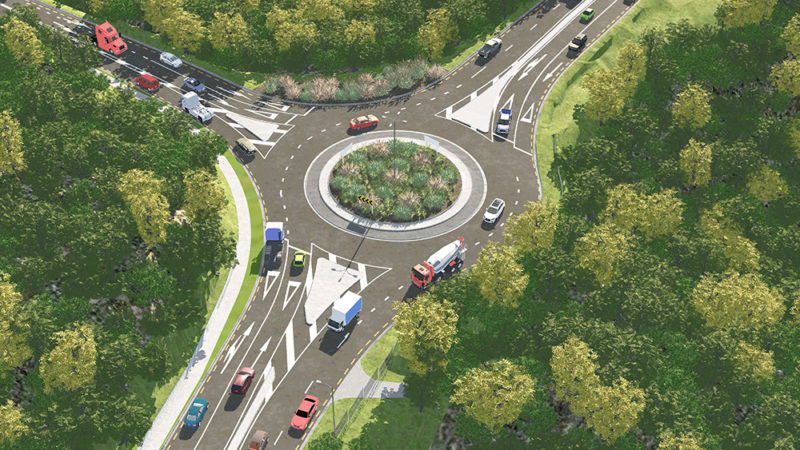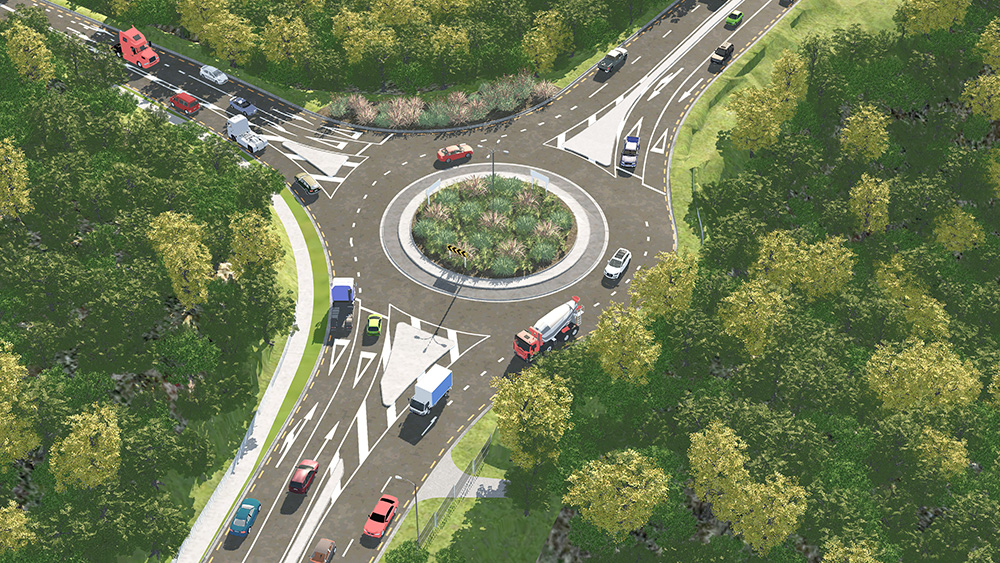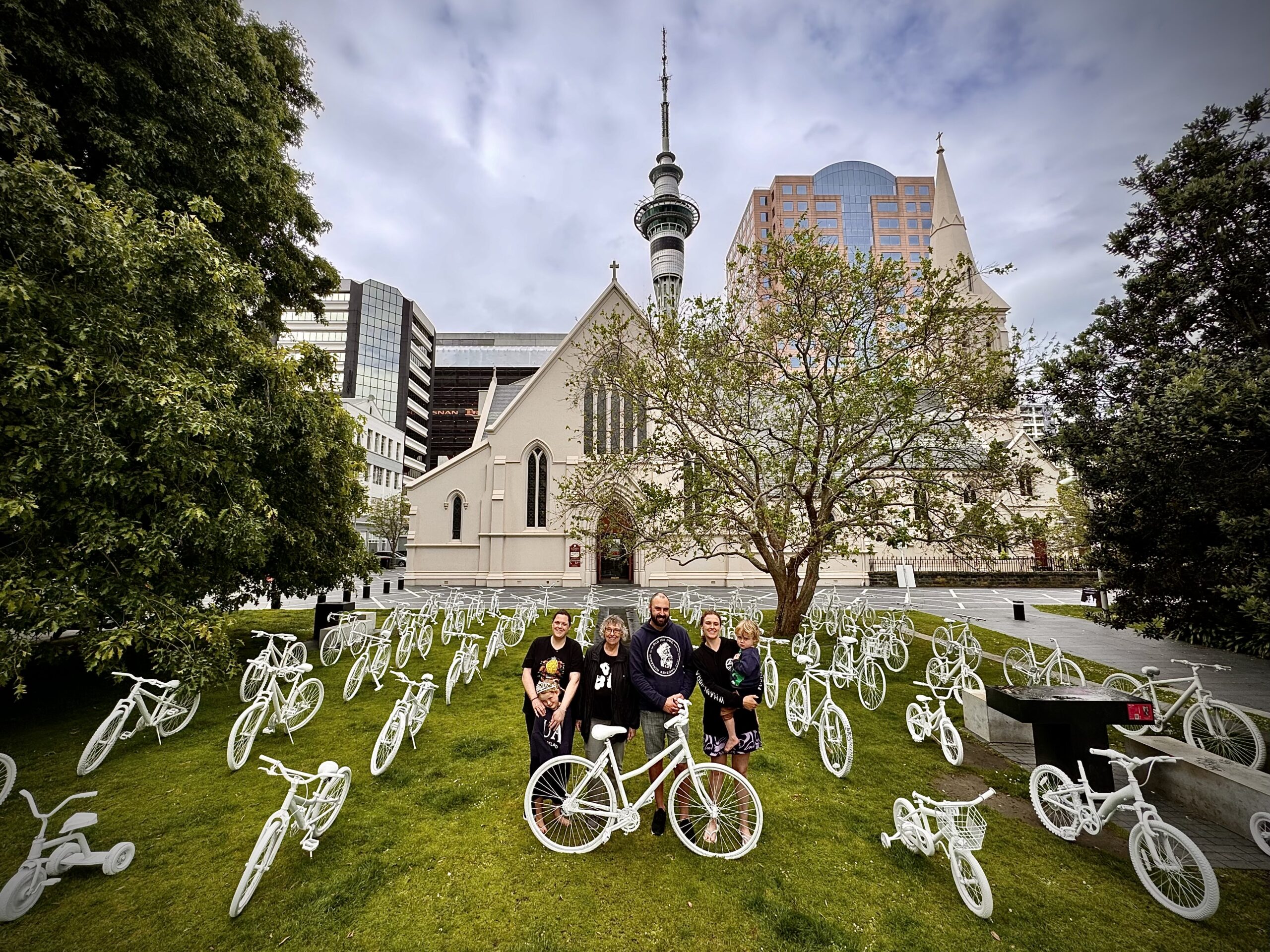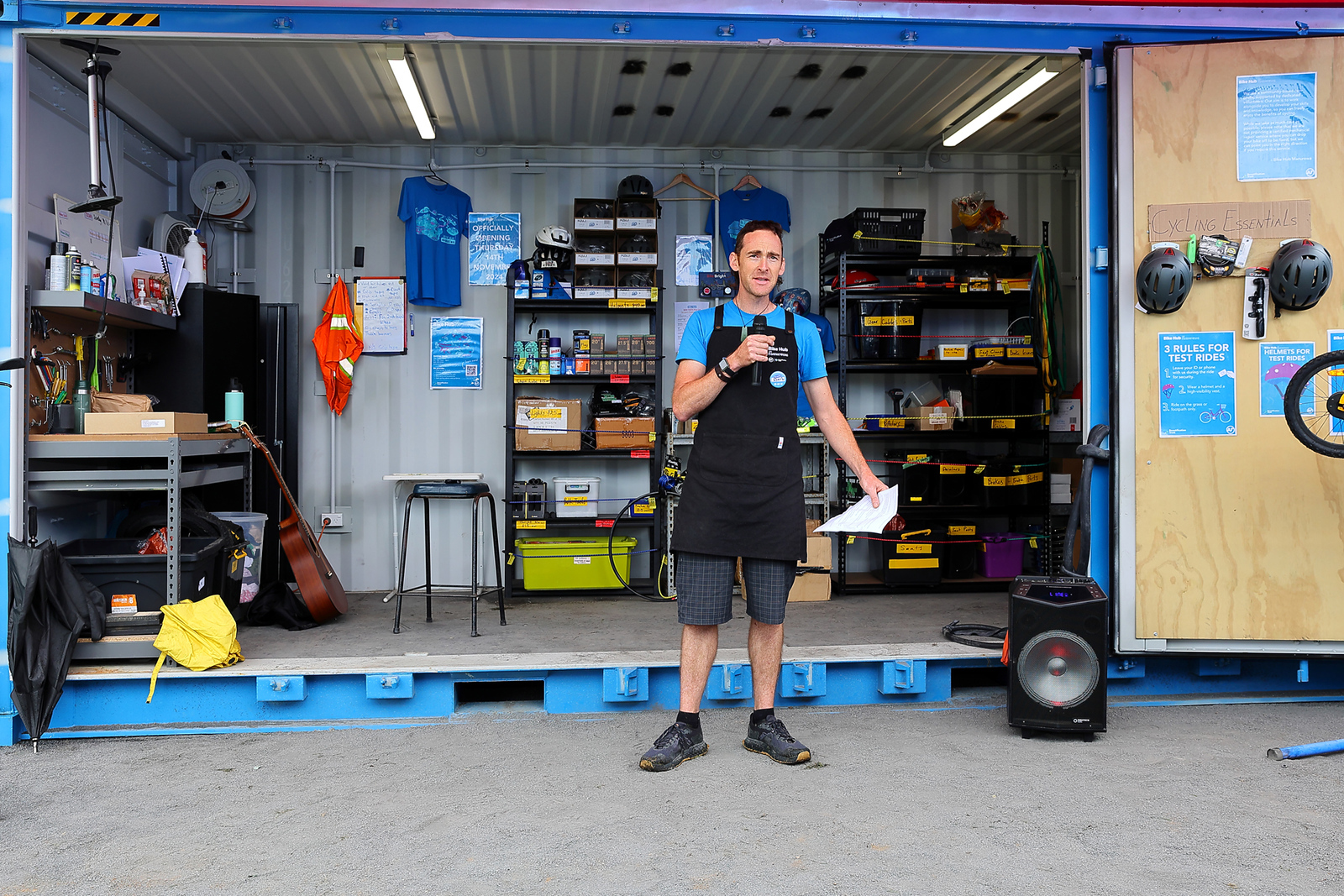As part of Auckland Transport’s new and highly welcome push for safety, Dairy Flat Highway is getting some serious attention. As well as reduced speeds, new right turn bays, centre median safety barriers, side barriers and intersection upgrades, the plan includes a two-lane roundabout at the notorious intersection of Dairy Flat Highway and the Coatesville-Riverhead Highway.
The improvements come not a moment too soon: this stretch of road has seen nine deaths and 55 serious injuries in the last decade, and this intersection in particular saw eight crashes in 2017 alone.
However, we have serious concerns that the design of the proposed roundabout will compromise safety for people on bikes. And we have questions about how Auckland Transport understands its new safety mandate, if it can propose a design that improves survivability for people in cars while simultaneously making it potentially much worse for those of us on bikes.
What’s the issue here?
Speed is a huge part of the problem here, which is why AT is proposing dropping the limit from 100kph to 80kph – and the other is intersection design. In this video about the project, local board member Louise Johnston notes the intersections “are not designed for the traffic movements we’ve got today.” Randhir Karma, group safety manager at AT says the proposed roundabout “will bring speeds down, make turning movements a lot simpler and more understandable, and raise the safety level of service on that particular intersection” [italics ours].


So what’s the problem with the proposed design?
The intersection, as it currently stands, is indeed awful. Traffic backs up, and drivers make split-second turning decisions that don’t end well, especially those turning right from Coatesville-Riverhead Hwy into Dairy Flat Hwy.
In the absence of cyclists, a roundabout is a good design solution here to reduce speeds and make movements more predictable. But with people on bikes in the picture, it’s diabolical – and there are many people bikes in this picture. Here’s a snapshot from Strava showing how busy this route is for cycling.


What’s wrong with roundabouts?
The research is clear that roundabouts pose significant risks for people on bikes, and that the risk is heightened by speed and the number of lanes, as noted here by NZTA:
“Roundabouts involve a higher proportion of cycling-related injuries than other intersection types. Multi-lane roundabouts are the main culprits and high-speed is also a critical factor.”
For an example of why, you need look no further than this horror from Christchurch in a 50kmh zone, or this recent encounter on a rural Auckland roundabout in Whenuapai:
Looking specifically at the proposed roundabout design for Dairy Flat, which has two approach lanes and two circulating lanes: at times of low traffic volumes it’s common for motorists to ignore lane markings and take a more direct path without lowering their speed. And those are exactly the times of day roadies are most likely to be using this route, whether individually or in bunches.
This means the mild radial approaches the design is attempting to implement actually turn into higher speed tangential approaches, at times most likely to endanger people on bikes.
Was cycling safety taken seriously in this proposal?
AT consulted on this proposal from Friday 8 June to Sunday 1 July 2018, and received 391 submissions. According to the feedback analysis, the top three concerns were:
- Speed reduction needed (219 submitters, 56%);
- Roundabout or traffic lights needed (115 submitters, 29%);
- Concerns about safety when turning in or out of the highway (105 submitters, 27%)
Digging in, of the the 115 people who mentioned ‘roundabout or traffic lights needed’, 84 (73%) talked about the Dairy Flat/ Riverhead-Coatesville intersection in particular, and most of those (70 of 84) mentioned a roundabout, while 29 mentioned traffic lights.
AT’s response doesn’t mention whether or why traffic lights were ruled out and a roundabout was chosen. It simply says:
A new roundabout will be constructed in the first quarter of 2019 at the current intersection. This will slow down traffic, improve safety and improve accessibility to and from Coatesville. [italics ours]
There were also 36 submissions asking for better safety for people cycling through the area. This was AT’s response:
Agree with the suggestions, however this is currently outside of the project scope. The current proposal does increase the shoulder spaces (in some locations) for the use as informal cycle lanes.
And at least one submission specifically asked for traffic signals at this intersection to address ‘impulsive and dangerous decisions’ made by drivers. This was the response from AT:
The current proposal for this intersection is a roundabout. This will improve the ability for motorists to safely use the intersection. [italics ours]
So what now?
The roundabout design was not part of the consultation, and Bike Auckland was not asked for input, even though it was apparently already well through the design phase as of June 2018. Now with design largely complete, the roundabout is scheduled for construction in early 2019.
Let’s be clear: the last thing we want is to slow down delivery of much-needed safety improvements for everyone who travels this strip, whether as a driver, passenger, motorcyclist, or cyclist.
However. If AT builds the roundabout as proposed and cyclists are subsequently injured or killed here, we will all wish we’d taken the time to ask whether AT had considered designs that would have avoided that.
As proposed, the current design throws existing users out of the frying pan into the fire on the grounds of safety for other road users. That isn’t fair, and runs counter to AT’s commitment to fully delivering on the safety recommendations in the Howard Report.
Auckland Transport must be aware of NZTA’s guidance on the matter of roundabouts and cycling:
In rural locations, pedestrian and cyclist safety and levels of service are less likely to be of primary concern, but design should aim to provide at least a basic level of safe provision for the expected range of users. [italics ours]
And Auckland Transport must know that dual lane roundabouts are more dangerous than single ones. It must also know that a single circulating lane design, with mountable ‘aprons’ on the roundabout’s centre to accommodate heavy vehicles, would allow more radial approaches, slower speeds, and more room for potential off-road cycling provision.
We’d say it’s really only by enforcing a single lane approach that you can actually generate the slower, safer speeds needed to ensure cycling safety through a roundabout like this in an 80kmh speed zone.
(Wondering whether a full-scale Dutch-style roundabout is the answer here? We’re looking forward to these in urban settings, where speeds are 50kmh or less and where the volume of people walking and biking is much higher and expected to grow – as proposed but not yet delivered for Glen Innes, for example. But we’re not convinced separate cyclist and pedestrian crossings are called for in this more rural setting. We’d like to hear your thoughts on this, even so.)
We have questions we’d like answered before this design proceeds
- Why was Bike Auckland not consulted on the intersection design, given its high use by cyclists?
- Why, in this age of Vision Zero, were people’s requests for safety improvements for walking and cycling deemed ‘out of scope’?
- What provision is made in the design for people on bikes, and how would AT describe the ‘safety level of service’ for cycling?
- Was signalisation of the intersection considered? If so, why was it rejected in favour of a roundabout, given everything we know about how high-speed rural roundabouts are actively dangerous for cyclists?
- Why was a dual circulating lane design chosen over a single lane design? Is it justified on traffic capacity grounds? Was a single-lane design considered?
- How can this design now be improved to ensure at least a basic level of safe provision for the expected range of users, which includes those on bikes?
We think we – and you – deserve answers from AT’s design team, and will be following this up.




